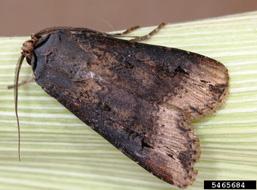News
Delayed fieldwork priming black cutworm infestations

Areas where fieldwork has been delayed could see increased black cutworm pressure this spring.
Bruce Potter, an integrated pest management specialist with the University of Minnesota, says a large migration of cutworm moths are looking for host plants to lay their eggs.
“The problem we’ve got this year is two-fold. One is that in many areas, very little tillage has been done. And secondly, we’re getting quite a few cutworm moths coming up over the past week, more than we’ve had come up for the past several years.”
Moving up from the Southern Plains, female cutworm moths seek small green weeds, making fields with reduced tillage most attractive.
Potter encourages growers to look for cutworm damage when evaluating corn stands.
“Some of the first signs of a cutworm infestation isn’t going to be cut plants, it’s going to be holes in some of the leaves. Kind of pinhole feeding, notches out of the leaves. If you see early-emerging lambs-quarters starting to disappear all on their own, those are all things to key in on.”
Potter tells Brownfield black cutworm pockets can be effectively managed with insecticide and he does not recommend insurance applications.

Add Comment